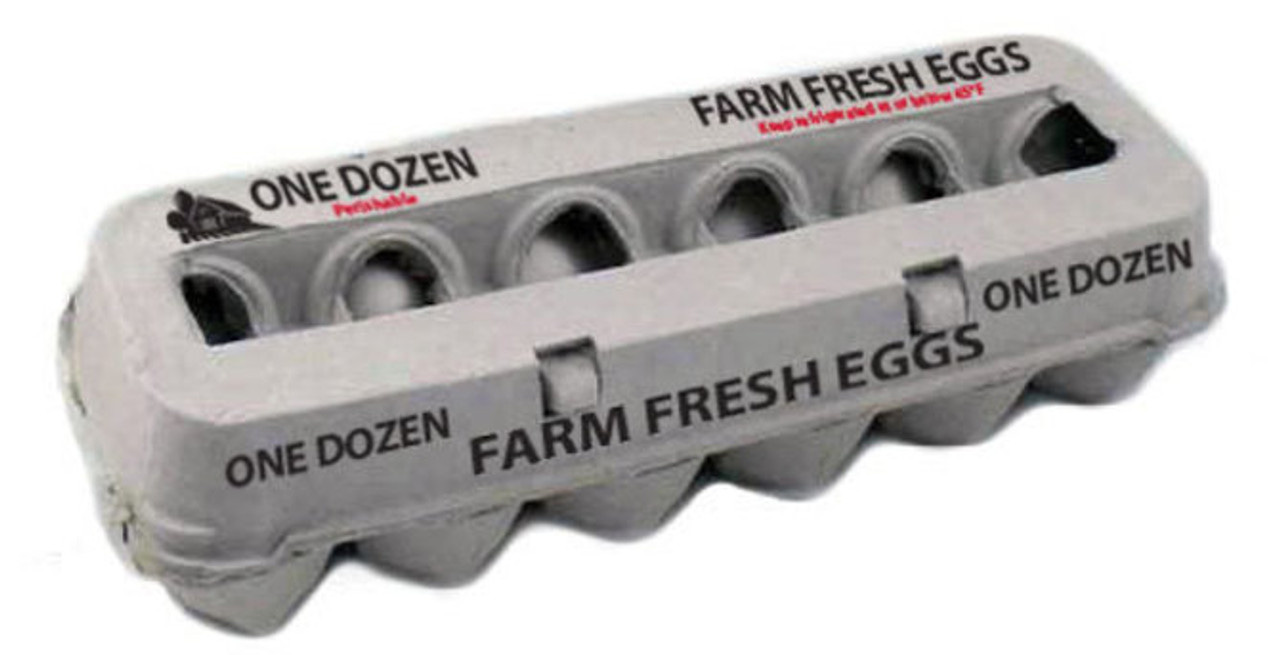With egg prices soaring, more Americans incorporating cardboard cartons into diet

When Valerie Kuralli of Clemmons, North Carolina, picks up a dozen eggs in the local market, she is looking for more than just unbroken shells. She also inspects each cardboard carton with a gentle press of her thumbs, looking for the right firmness and texture, much like she would with an avocado.
The Kurallis easily go through 12 eggs a week. Valerie prefers them hardboiled for salads. Her husband, Todd, likes them sunny side up with toast. Their two boys, Aidan (9) and Owen (7), prefer them scrambled with a squirt of ketchup.
Despite their heavy egg consumption, it had never put much strain on their pocketbook. That is, until last year. From December 2021 to December 2022, the nationwide average price of a dozen Grade A eggs jumped from $1.79 to $4.25. In many places, they are well north of $5. The average in California: $7.37.
Eggs saw the highest year-to-year price increase of any grocery category, which farmers and economists alike have blamed on a recent avian flu outbreak that has decimated egg production. What for so long was a reliably inexpensive source of satiating protein is now yet another cost burden on poor and middle-class families.
This reality has forced many Americans to search for cheap and creative ways to stretch their breakfast menus. Currently, the most popular trend is to utilize the very cardboard cartons the eggs came in. When diced up in small pieces, the cartons can provide a scrumptious low-calorie, high-fiber addition to any omelet or quiche. Sometimes, Valerie simply fries up some carton strips in a skillet to give breakfast a delightful crunch.
And she is not alone.

Austin Adams of Cedar City, Utah, began eating egg cartons in August, and he likens it to something his father taught him while growing up. “As a kid, for a snack I’d often wrap Swiss cheese around a piece of ham or bologna,” Adams said. “Whenever my dad saw this, he would say, ‘Eat that with a piece of bread, it’ll go farther.’” He says he’s basically employing the same concept now whenever he makes, for example, a CLT (Cardboard Lettuce Tomato).
Claire Sanders of Bend, Oregon, hosted a brunch with a few of her girlfriends last week. She searched online until she came across a delicious-looking cardboard egg casserole. “All I had to do was open the carton and add some diced peppers, onion and mushrooms,” she said. “Don’t tell anybody, but I also threw in a few tater tots – I know, I am SOOO bad! Then I closed the lid, covered it with foil and baked it at 350 degrees for 45 minutes. I didn’t even crack any of the eggs! When it was done, I topped it with a little shredded cheddar, a dollop of sour cream and some chives. My girlfriends LOVED LOVED LOVED it! This will be my new go-to whenever I have people over.”

This new culinary trend extends beyond egg cartons. Garrett Graves of Marshfield, Missouri, used to dispose of the cardboard circle included underneath frozen pizzas. But one time he mistakenly placed the whole thing in the oven. He didn’t even notice his mistake until the third slice. But he said it tasted pretty good. So now he just adds a layer of mozzarella between the pizza and the cardboard circle to create a double-stuffed crust. He said that, depending on the cost of the pizza, sometimes the cardboard crust tastes better than the real thing.
“If egg prices remain where they are, some day we’re going to look back and find it unthinkable that we used to just throw away the cartons,” said Gavin Tuttle, a chef at America’s Test Kitchen. “Especially now that we’ve discovered so many delicious ways to prepare them.”
Public health experts recommend wiping the top, bottom and sides of the egg carton with a damp washcloth prior to eating or cooking. They also said that Styrofoam egg cartons can suffice in a pinch, but it is best to consume them raw, as they can turn into a real mess when heated.



